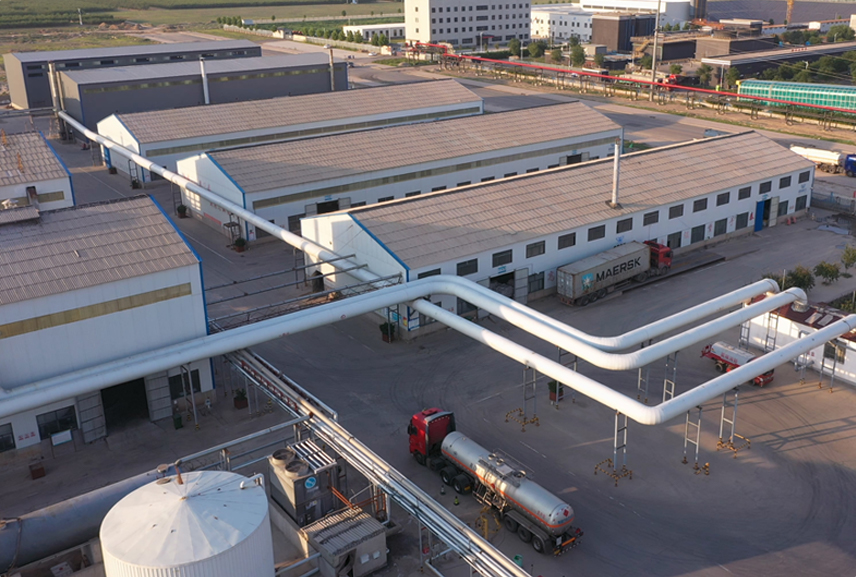Building mortar is a mortar that bonds masonry block materials (bricks, stones, blocks) as a whole. It is composed of inorganic cementitious materials, fine aggregates and water, and sometimes certain admixtures. Admixtures include HPMC, redispersible polymer powder and high-efficiency water reducer. These additives make the mortar easier to use and achieve the best results.
Haoshuo HPMC is a non-ionic cellulose ether, white to off-white powder, which can be used as a thickener, adhesive, film former, surfactant, protective colloid, lubricant, emulsifier, suspending agent and water retention aid. In addition, these types of cellulose ethers also have the characteristics of thermal gelation, metabolic inertness, enzyme resistance, low odor and taste, and pH stability.
Due to its various properties, HPMC is often used to replace many other additives with lower concentrations, making HPMC a very efficient and effective additive and thickener in building mortar.
The mortar has good fluidity and suitable air entrainment. Adding cellulose ether can reduce the density of the mortar, improve the workability, and increase the output of the mortar. At the same time, the air trapped in the mortar makes the concrete have better thermal insulation.
Cement Plaster / Dry Mix Mortar
• Simple dry mix formula due to cold water solubility: can easily avoid caking, very suitable for thick tiles.
• Good water retention: prevent liquid loss into the substrate, maintain the right moisture content in the mixture, thus ensuring longer concrete setting time.
• Increased water consumption: increase open time, expand spraying area, more economical formulation.
• Easier to spread and improved anti-sagging due to improved consistency.
We provide the best solution to balance product performance and cost. We develop customized formulations with various functions and properties to meet customers' unique requirements and specific industrial needs. Our experienced technical experts are always ready to help customers solve any problems.
| Item | Unit | Standard Specifications |
| Appearance | / | White powder,free flowing |
| Loss on drying | % | 4-6 |
| Residue | % | 3.5 |
| Methyl | % | 49-26 |
| Hydroxypropyl | % | 7-14 |
| Ph value(25C) | / | 6-8.5(neutral) |
| Gel temperature | ℃ | 60 degree/75 degree |
| degree of fineness | mesh | 100 mesh,>96%80 mesh,>100% |
| Apparent density | g/m3 | 0.4-0.6 |
| proportion | g/L | 420-520 |
| Surface Tension(2%solution) | dyn/cm | 42-56 |
| Water retention | % | ≥92 |
| Light Transmittance | % | 65-90 |
| Carbonization temperature | ℃ | 280-300 |
| Discoloration temperature | ℃ | 190-200 |
Related Products
HPMC (Hydroxypropyl Methyl Cellulose)
Better water retention and open time
Better strength development of the mortar
Improved workability
Increased adhesion to a variety of substrates
MHEC (Hydroxyethyl methyl cellulose)
High thickening efficiency and wide range of viscosity grades
Good compatibility
Excellent stability
Good protective colloid activity
RDP (Re-Dispersible Polymer Powder)
High flexibility, good film formation
High water resistance for increased open time
High hydrophobicity, ability to bridge cracks
Viscous texture and high workability
Related Application Categories
Hydroxypropyl methylcellulose (HPMC) has emerged as a game-changing additive in the evolving world of body wash manufacturing.
Anti-crack mortar is a mortar made by mixing anti-cracking agent, cement and sand with water in a certain proportion, which can meet certain deformation and remain crack-free.
The working principle of laundry detergent is similar to that of traditional washing powder and soap, and the active ingredients are all surfactants.
HPMC's role in cosmetics mainly includes increasing viscosity, adjusting rheology, moisturizing, stability and improving surface activity.
Daily Chemical Detergent Grade HPMC Cellulose
Daily chemical Detergent grade hydroxypropyl methyl cellulose (HPMC) is a synthetic high molecular polymer prepared by chemical modification with natural cellulose as raw material.
HPMC cellulose ether enhances mortar and board caulking agent by improving anti-cracking shrinkage and strength, minimizing the risk of cracks, and extending working time. With superior water retention properties, it prevents issues like fast drying and poor hardening, ensuring optimal hydration.
FAQ
Regarding the relationship between viscosity and temperature in HPMC (HPMC viscosity), what should be noted in practical applications?
What are the differences between HPMC and MC?
What are the formulations for interior and exterior wall putty powder?
What is the application of HPMC in putty powder, and what causes the formation of bubbles in putty powder?


Get in Touch
Interested in how our HPMC can enhance your personal care formulations? Contact us to request a free sample and experience the superior quality of our cellulose ether products.
Related News and Blogs
24
Aug., 2024
Let's meet Indonesia Coatings Exhibition 2024
The 10th Paintistanbul & Turkcoat Fair will be held at the Istanbul Exhibition Center in Turkey from May 8th...
19
Nov., 2021
What Causes A Cracked Putty Layer?
The one-off scraping thickness of the putty is directly proportional to the curing shrinkage strength, which increases in proportion to the tendency of the putty to crack.
04
Nov., 2021
Whether you are carrying out small repairs or building walls, knowing how to mix the mortar needs to be precise. If the mortar is too dry, the blocks will not stick together properly. If it is too wet, flowing mortar can spill out of the joints, resulting in wasted time and materials for clean-up.
25
Oct., 2021
The Effect of Winter Construction Temperature on Tile Adhesives
As we all know, tile adhesive is generally made from cement and mixed with various additives. It is mixed with water at the construction site and then applied to the wall or floor.

Get in Touch
Interested in how our HPMC can enhance your personal care formulations? Contact us to request a free sample and experience the superior quality of our cellulose ether products.